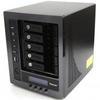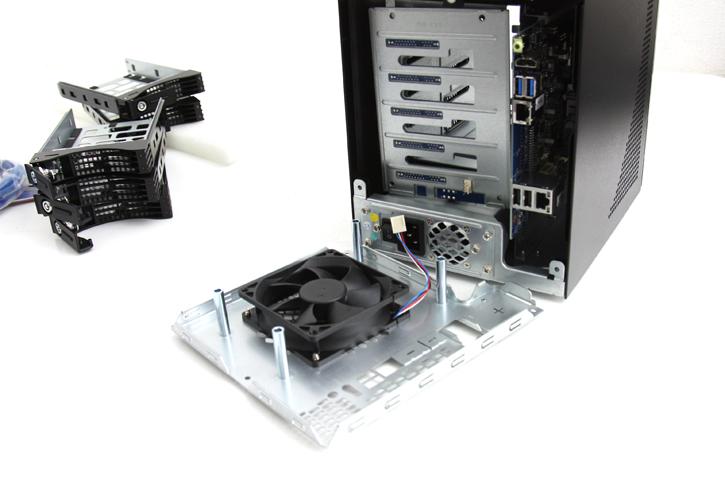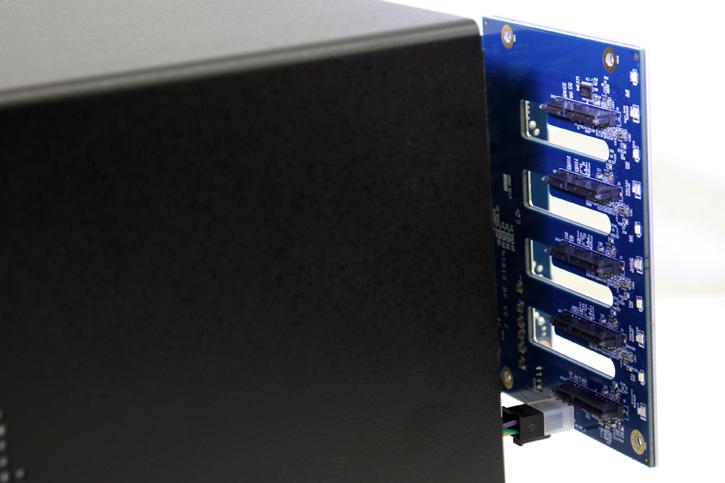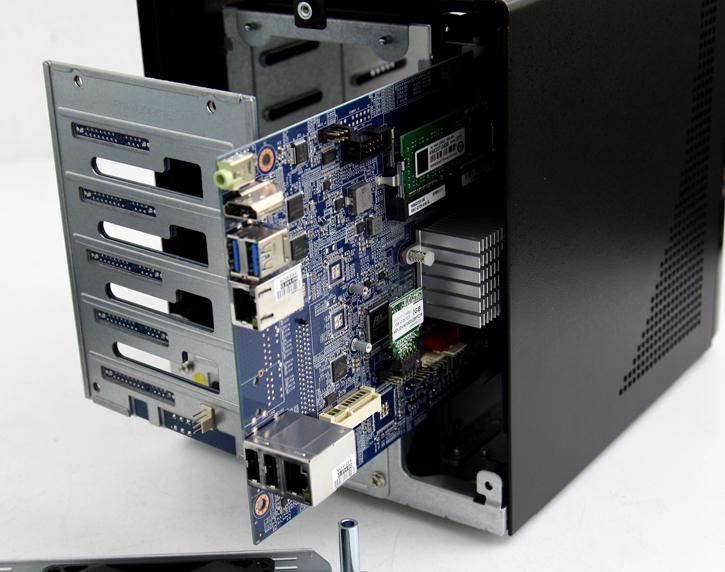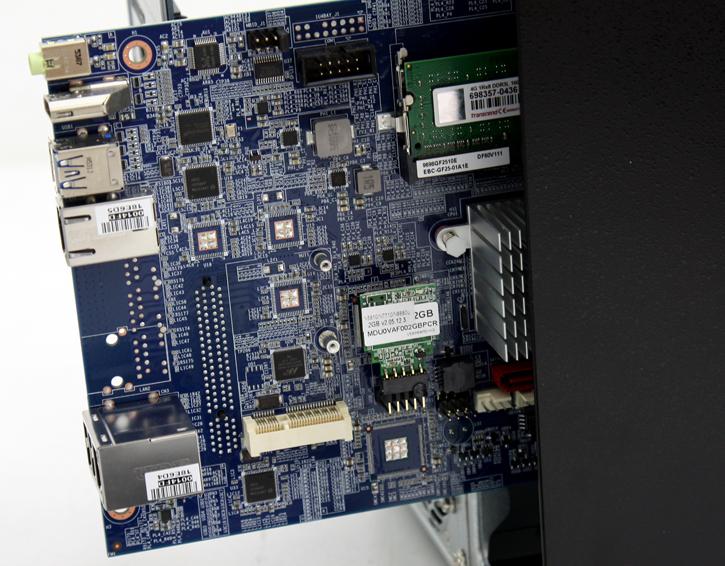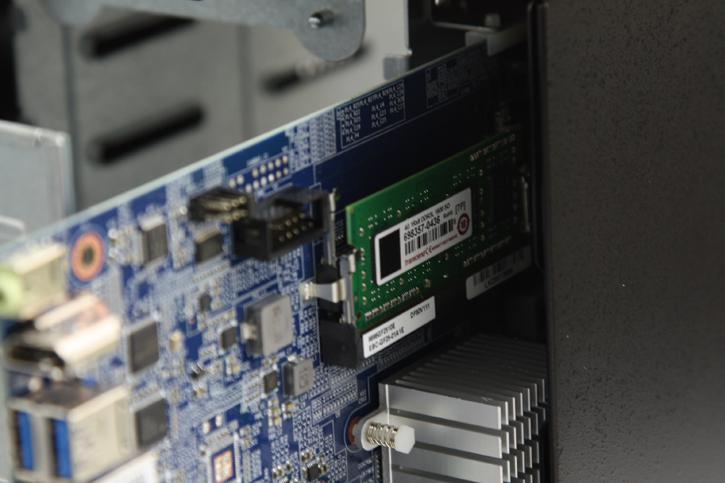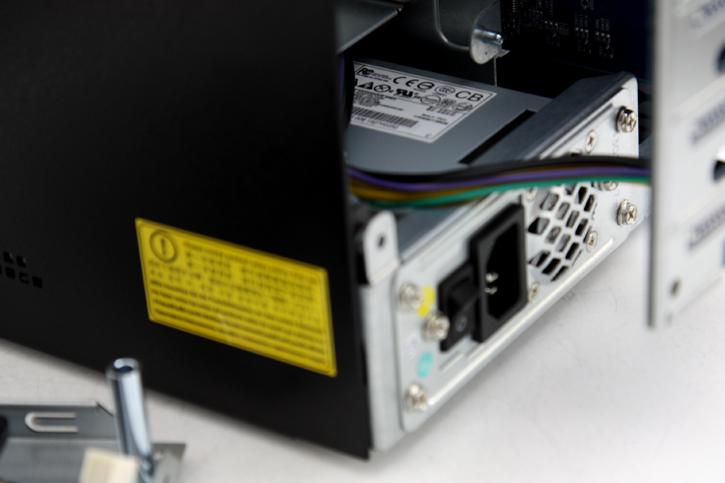Product gallery
Let's have a look inside. At the backside we remove three screws and then push the backplate outwards. We disconnect the fan - a big whopper ADDA, AD09212UB257B00 (12V, 92 mm, 0.38 A) with double ball-bearings. Once we open the unit up, we see it's really a small form factor PC. The unit is basically based on three components, a motherboard with memory and CPU, the SATA 600 bridge with connectors and a drive bay.
Once we flip around the unit in a different angle we can take out the HDD mounting PCB / SATA bridge. Inserting and removing the HDD/SSD is a very simple and smooth process, this unit is hot swappable meaning you can change/remove/insert storage units even when the unit is powered on. If you opt a big HDD, everything we know is supported including 8TB HDDs. There are five trays where you can install your HDDs in if you prefer it many RAID options and a hot-spare. At the PCB you can see the SATA connectors. These are all SATA 600 aka SATA3 aka SATA 6 Gbps.
At the backside again, we pull out the motherboard. I am not removing it 100% as there is some wiring attached, but this will get the job done. Zooming in at the PCB you really are looking at a SFF motherboard with embedded 2.0 GHz Celeron quad core processor, memory and storage subsystems. Most of it is SMT soldered however you may upgrade the memory.
Here we can see it a little better. Up top the SODIMM mount, lower at the heatsink the Celly is placed. It has a low TDP (~10 W) hence the Intel J1900 Trail-D CPU can be passively cooled. At the green PCB in the middle you'll notice a 2GB mark, this is flash memory with the server's ROM. Audio is managed by a Realtek chip, Asmedia for USB and below the NAND chip there is a PLX IC these days called "Avago" basically creating four PCI Express Gen 2 lanes.
Here you can see the two RAM slots, one of them is populated with a Transcend DDR3 1600 MHz 4 GB DIMM. You may double that up. Albeit 4GB we feel is perfect for this unit. But perhaps if you'l like to run some more advanced MySQl database stuff on the NAS, 8GB would be a cheap upgrade alright. For our testing we are mounting an SSD as we do not want any kind of HDD to be a bottleneck in measuring performance in IOPS, reads and or writes.
Down under we see the SFF (Flex ATX) power supply. The Pro model of this revision actually comes with a small embedded UPS. A pretty cool feature that this model doesn't have. Basically that UPS would keep the power on the NAS for another ten/fifteen minutes with a grid power failure. The pro model however costs roughly 200 bucks more.
